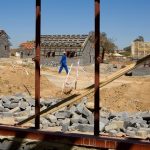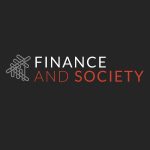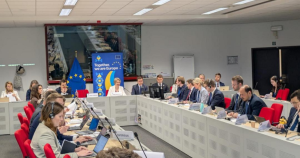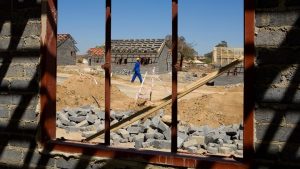
Jeonse, a housing lease model unique to Korea, has long served as a cornerstone of housing security for many families. However, recent significant fluctuations in housing prices have highlighted concerns such as underwater jeonse and reverse jeonse, amplifying calls for reform. A crucial step in addressing these challenges and ensuring the stability of the jeonse system is to expand the scope of the Guarantee for a Return of Jeonse Deposit. In pursuit of this, it is important to accurately reflect risks in return guarantees and to consolidate jeonse guarantees under the unified framework of the Guarantee for a Return of Jeonse Deposit.
Ⅰ. Introduction
Korea’s unique lease model, “Jeonse, ” emerged when its financial system was still maturing. Seldom found in other countries, jeonse has since been lauded for enhancing housing security for numerous ordinary families. Unlike the monthly rental system known locally as “Wolse,” jeonse entails a significant upfront deposit that is returned to the tenant upon lease termination. This system allows renters to reduce their housing expenses and accumulate considerable savings, paving the way from wolse to homeownership. Landlords, on the other hand, can use this deposit as capital for additional real estate endeavors. At its core, jeonse has spurred property acquisitions through private financing, enhancing the national housing supply. Simply put, its swift rise in popularity in Korea can largely be ascribed to how it resonates with the objectives and ambitions of both tenants and landlords.
Long stable, this uniquely Korean system has recently revealed latent risks from several incidents. In July 2020, the Housing Lease Protection Act underwent significant revisions, leading to profound institutional changes in lease agreements. At the same time, a liquidity boom driven by COVID-19 resulted in a marked rise in both housing and jeonse prices. However, in the latter half of 2022, swift interest rate hikes brought about a sharp contraction in the housing market. In the midst of this unexpected downturn, instances of property values falling below jeonse prices—a situation termed “underwater jeonse”— became more frequent, pushing jeonse prices to decline as well. This situation ushered in the growing dilemma of “reverse jeonse. ” As a result, upon lease renewal, landlords may find themselves having to return a portion of the deposit, amplifying the risk for tenants trying to retrieve their upfront deposits.
With rising concerns over unreturned jeonse deposits, there is an increasing demand for systemic reform. While some believe that jeonse may have outlived its relevance, the timeline for a shift from jeonse to wolse —as the primary leasing model similar to those in other countries—remains uncertain. Against this backdrop, this study aims to explore the vulnerabilities of the jeonse system and suggest strategies for improvement based on its findings.
As a uniquely Korean housing rental system, jeonse has enhanced housing stability for ordinary families, but recent fluctuations in the housing market have exposed the risk of tenants not getting their deposits back.
Ⅱ. Jeonse: Current Situation and Risks
1. Current Situation
According to the 2020 Population and Housing Census by Statistics Korea, 60% of Koreans are homeowners. Of these 20.15 million general households, 11.99 million live in properties owned by household members. On the other hand, 8.16 million households reside in accommodations rented from third parties. In regions with high housing costs, particularly in the capital area, the homeownership rate drops significantly. For instance, in Seoul, only 35% of residents own their homes.
The dominance of jeonse in the Korean housing market is evident from recent renting statistics. According to the Ministry of Land, Infrastructure, and Transport’s Housing Leasing Contract Reporting System and the Confirmed Occupancy Date Report, there has been a marked increase in the cumulative transactions of jeonse and wolse—rising from 1.6 million in 2016 to 2.8 million by 2022. Notably, by June 2023, transactions had already surpassed 1.46 million. Given that the Housing Leasing Contract Reporting System excludes contract renewals with unchanged deposit amounts, as well as leases with minor deposits or shorter terms, the actual number of leasing agreements could be higher than reported figures. Although jeonse once accounted for 60% of all residential rental transactions, its share has dwindled, now at around 45%. However, as jeonse still represents nearly half of all leasing contracts, it is expected to persist as a dominant housing option for ordinary citizens.

Approximately 8 million general households in Korea reside in properties owned by others under lease contracts. Of all jeonse and wolse transactions, jeonse takes up nearly half, underscoring its sustained significance for the foreseeable future.
2. Jeonse Price and Reverse Jeonse
Jeonse prices have recently seen dramatic fluctuations. In particular, a substantial downturn from the latter half of 2022 has intensified concerns about reverse jeonse. This means that upon contract renewal, landlords are required to return a portion of the deposit to tenants. Figure 2 compares jeonse prices to those from two years before in line with the standard two-year lease term of jeonse agreements. The data suggests reverse jeonse began emerging towards the end of 2022, and by the close of this year, it is estimated that landlords in the capital region will, on average, return about 15% of the initial deposit. Additionally, the Bank of Korea projected that, as of April 2023, nearly 1.026 million households were at risk of reverse jeonse, and the average gap between the initial deposit and the jeonse price is estimated to be around 70 million won.

Jeonse prices started to decline in the latter half of 2022, a trend expected to persist through 2024, accompanied by increasing concerns about reverse jeonse.
3. Ratio of Jeonse to Sales Price
The ratio of jeonse price to sales price (hereinafter referred to as “jeonse-to-price ratio”) suggests that a higher ratio correlates with a greater likelihood of failing to return the deposit. Figure 3 illustrates this ratio, using the publicly disclosed price as an approximation for market value. This ratio is calculated by dividing the deposit from all 2022 jeonse transactions by the respective public price of the property for that same year. The data reveals a downward trend in the ratio as public prices rise. For properties valued at 50 million won or less, the ratios stand at 137% for apartments and 151% for row houses and multi-household houses. However, as public prices increase, these ratios decline, falling to 67% and 73% for properties valued over 500 million won. In particular, row houses and multi-family dwellings consistently display higher ratios than apartments, suggesting that the more affordable multi-household units, predominantly occupied by average families, are at a greater risk of not recovering their jeonse deposit.

While the jeonse-to-price ratio based on the publicly disclosed value decreases as the property value increases, multi-household units consistently show higher ratios than apartments, implying that the former households are at a greater risk of not recovering jeonse deposits.
Ⅲ. Korea’s Jeonse Deposit Return Guarantee System: Current Status
As the occurrence of reverse jeonse and rising jeonse -to-price ratios heighten the risk of tenants not retrieving their deposits, the importance of the jeonse deposit return guarantee system increases. This system not only safeguards housing deposits post-transaction but also ensures that guarantor organizations step in to repay deposits if landlords do not meet their return obligations. In exchange for this protection, guarantors charge a fraction of the deposits as a guarantee fee. Should a guarantor intervene to ensure the return of a deposit, they subsequently exercise their right of indemnity against the property owner.
Figure 4 displays the balances related to jeonse guarantees, revealing a marked increase since 2018. In particular, the “Guarantee for a Refund of Jeonse Deposit” by the Korea Housing & Urban Guarantee Corporation (HUG) surged in value from 29 trillion won in 2018 to a substantial 105 trillion won by 2022. This program, introduced in 2013, initially required a landlord’s consent for tenants to access the deposit return guarantee. However, with the removal of this requirement in February 2018, the uptake of this guarantee program has significantly expanded.
Besides the optional “Guarantee for a Refund of Jeonse Deposit,” the HUG also provides the mandatory “Guarantee for a Refund of Jeonse Deposit for Jeonse Rental Housing.” This compulsory scheme is aimed at registered private rental business entities to secure tenants’ deposits. Combined with this statutory guarantee by HUG, which has a balance amounting to 60 trillion won, public guarantor institutions collectively safeguard a sum nearing 170 trillion won in total jeonse deposits.

The deposit return guarantee system ensures that if leaseholders fail to meet their return obligations, a guarantor agency will refund the deposit. Presently, guarantees from public guarantor agencies amount to around 170 trillion won.
From the latter half of 2022, there has been a marked rise in guarantee-related incidents, especially those tied to underwater jeonse and jeonse fraud, amidst a stagnant housing market. Figure 5 displays the number of such incidents and reimbursed amounts under HUG’s Guarantee for a Refund of Jeonse Deposit, compared with their monetary value in relation to its balance. A significant increase in these incidents began in 2018 after the expansion of the deposit return guarantee’s coverage. This uptrend climaxed in 2022, coinciding with the downturn in the housing market. Preliminary figures for 2023 suggest a continued rise in guarantee incidents, with the aggregate value nearing 2 trillion won as of July.

Due to the recent steep increase in guarantee-related incidents, the Korean government tightened the eligibility criteria for the deposit return guarantee in May 2023. Before these changes, the jeonse -toprice ratio had to be below 100% to be eligible for protection. This threshold has now been reduced to 90%. Furthermore, the market valuation based on the publicly announced price has been adjusted from 150% to 140%, which means the current maximum allowable ratio stands at 126% (140% x 90%) of the public price.
Due to a marked rise in guarantee-related incidents from 2022 onwards, the application requirements for the refund guarantee were tightened in May 2023.
This study examines houses that fall outside the protection scope under the newly tightened criteria. Figure 6 illustrates the distribution of public prices for properties where the jeonse -to-price ratio exceeds 126%, making them ineligible for the guarantee. As shown in the figure, the majority of these properties have lower public prices. Their average public price is around 130 million won, with most priced under 300 million won.

Low-priced houses are mostly excluded from the deposit refund guarantee due to stricter eligibility requirements.
Ⅳ. Korea’s Jeonse Deposit Return Guarantee System: Suggestion for Improvement
The jeonse deposit guarantee system, despite its rapid expansion, is not without challenges. Firstly, as noted earlier, stricter eligibility criteria for this guarantee have been introduced due to the rising instances of tenants unable to retrieve their deposits. Unfortunately, this tighter standard unintentionally excludes the most vulnerable renters, especially those in affordable multi-household units. Secondly, the Guarantee for a Refund of Jeonse Deposit overlooks certain risks tied to deposit return failures, such as a landlord’s solvency. Lastly, an unchecked moral hazard exists among landlords, driven by the emergence of “gap investments” that capitalize on expanding jeonse loans and deposit return guarantees. This questionable strategy brings about additional complexities, potentially impacting mortgage loan equity and the broader macro-prudential stability. This section will explore potential measures to address these challenges.
Regrettably, the jeonse deposit return guarantee system does not adequately shield vulnerable tenants from the risk of not retrieving their deposits, as the guarantee fee rate does not accurately reflect the actual risks involved.
1. Guarantee Fee Rate: Calibration and Differentiation
HUG offers two products under its jeonse deposit return guarantee scheme, as illustrated in Figure 1: the Guarantee for a Refund of Jeonse Deposit and the Guarantee for a Refund of Jeonse Deposit for Jeonse Rental Housing. The primary difference between these two products is the identity of the applicant. The Special Act on Private Rental Housing mandates that registered private rental business entities purchase the latter guarantee. In contrast, for the Guaranteefor a Refund of Jeonse Deposit, tenants have the discretion to opt in or out.
Additionally, each guarantee comes with its own fee rates. The fee for the Guarantee for a Refund of Jeonse Deposit ranges between 0.115% and 0.154%, determined by factors like housing type, deposit size, and debt ratio. On the other hand, the fee for the Guarantee for a Refund of Jeonse Deposit for Jeonse Rental Housing can reach up to 1.590%. This rate factors in the landlord’s creditworthiness and debt-to-equity ratio. As the rental deposit constitutes a liability for the landlord, the rate of this latter product reflects an evaluation of their capacity to repay.

Moreover, in reference to the incident rate of the deposit return guarantee, the fee rate for the Guarantee for a Refund of Jeonse Deposit seems lower. Figure 5 demonstrates that the guarantee incident rate, calculated as a percentage of the previous year’s guarantee balance, was 1.55% in 2022—dividing the monetary value of guarantee incidents for 2022 (1.3211 trillion won) by the guarantee balance at the close of 2021 (85 trillion won). Although this incident rate fell to 1.10% in 2021 from 1.46% in 2019, it rose again in 2022. As the guarantor first compensates the tenant in the event of an owner’s default and then seeks to exercise the indemnity right, the actual guarantee loss may be somewhat less than the figures indicate. Therefore, aligning the guarantee fee rate with actual losses is essential.
The Guarantee for a Refund of Jeonse Deposit (HUG) has a lower guarantee fee rate compared to other products, especially against the actual incidence rate of guarantee defaults. Hence, guarantee fee rates should be recalibrated to accurately represent risks, taking into account the actual default rates.
However, adjusting the guarantee fee rate to better reflect reality may result in higher rates, particularly for lower-priced houses with a high jeonse-to-price ratio. Properties with this elevated ratio carry a greater risk of deposit non-repayment. Figure 3 supports this, indicating that homes with lower public prices consistently have a higher jeonse-to-price ratio. In addressing such risks, short-term remedies might involve offering targeted financial assistance to at-risk groups, especially since the guarantee fee rate is entirely borne by tenants under the Guarantee for a Refund of Jeonse Deposit. For a long-term strategy, guarantee fees could be varied based on the financial standing of landlords, using metrics like debt ratios, as seen in the Guarantee for a Refund of Jeonse Deposit for Jeonse Rental Housing. Furthermore, given the data available on tenants, there is a need for measures that ensure a fair distribution of the guarantee fee between tenants and landlords to minimize the financial strain on renters.
In sum, the fee rate of the Guarantee for a Refund of Jeonse Deposit for tenants should be recalibrated to more accurately reflect the associated guarantee risks. Further differentiation of these rates based on the financial status of landlords is also vital. Implementing these changes would strengthen its central role within the jeonse contractual framework and broaden the scope of the deposit return guarantee system.
Since recalibration of guarantee fee rates might increase the rates for lower-priced houses, short-term remedies targeting vulnerable households are necessary.
2. Downsizing Guarantee for Jeonse Deposit Loan
Reducing the demand for the Guarantee for Jeonse Deposit Loan among tenants necessitates strengthening the Guarantee for a Refund of Jeonse Deposit. The jeonse loan guarantee is designed to ensure the repayment of loans that tenants obtain from financial institutions. With a reliable assumption that landlords will consistently return deposits, the repayment risk associated with the jeonse loan virtually disappears. Thus, requiring landlords to secure deposit return guarantees as part of the jeonse loan process has the potential to significantly curb the demand for the Guarantee for Jeonse Deposit Loan.
One potential drawback of policy measures favoring jeonse is the unintended increase in jeonse loans, i.e., household debt. This is because tenants who possess guarantees for jeonse funds can receive preferential terms when applying for loans, including both the amount and interest rates. Further complicating matters, housing policies reinforcing this type of financing might amplify rental demand, thereby driving up jeonse prices. As of now, the cumulative debt from jeonse in 20 commercial banks stands at a hefty 170 trillion won. By comparison, the combined 135 trillion won balance from the two guarantee institutions in Figure 4 appears colossal. Given these figures, it is difficult to dismiss the notion that jeonse assistance, either directly or via guarantees, pushes leasing prices upwards. Therefore, jeonse support should be limited to the most vulnerable, at least until evidence conclusively shows that such support does not drive up jeonse prices.
As the Guarantee for Jeonse Deposit Loan can drive up jeonse prices by expanding jeonse loans, mitigation is necessary by mandating the purchase of deposit refund guarantees during jeonse loan acquisition process.
3. Review of a Hybrid Guarantee Model
Lastly, a long-term strategy should consider a hybrid guarantee system that incorporates escrow in light of recent fledgling discussions surrounding its adoption. Commonly used in e-commerce, escrow acts as a deposit payment intermediary. In the context of jeonse, a third party, rather than the landlord, would manage the tenant’s rental deposit, ensuring its safekeeping. However, fully adopting the escrow system would deny landlords access to the deposited funds, which essentially serve as monthly rent. Since integrating all escrow features could jeopardize the jeonse system itself, it is important to explore its potential role while preserving the jeonse model’s viability.
To this end, this study proposes a mixed model that further integrates the Loan-to-Value (LTV) ratios currently used in home mortgages. If the jeonse -to-price ratio is below the regional LTV regulations, the standard mechanism of Guarantee for a Refund of Jeonse Deposit will take charge. However, if the ratio exceeds the LTV limit, return guarantees would cover up to that LTV threshold, while amounts surpassing this would fall under the escrow system.
This hybrid guarantee approach could also counteract the growingtrend of gap investments, where properties are purchased using the jeonse deposit. By effectively bypassing LTV limits, gap investment has been criticized for driving up housing prices during market highs and instigating issues like underwater jeonse during downturns. Against such a dubious practice, the proposed hybrid guarantee system could reduce the likelihood of such regulatory sidestepping through gap investments by enforcing LTV rules across all housing, whether leased or owned.
For the hybrid guarantee system to be thoroughly instituted, the Guarantee for a Refund of Jeonse Deposit needs to be recognized as integral to rental agreements. In addition, the guarantee fee rate should correspond to the inherent risks. Contracts with a jeonse-to-price ratio greater than the LTV ratio ought to have higher guarantee fees than those that remain under the LTV threshold. Accordingly, by utilizing the mixed to keep the jeonse-to-price ratio within the LTV boundary, landlords stand to benefit from reduced guarantee fees. This framework also presents landlords with a strong incentive to engage, and fine-tuning these benefits could bring about a gradual transition in the housing deposit guarantee landscape.
A hybrid guarantee system that utilizes escrow not only ensures the protection of the tenant’s deposit but also allows for the application of LTV regulations, typically exclusive to home mortgages, across all housing types.
Ⅴ. Conclusion
This paper delves into the jeonse system, a predominant housing lease model for average Korean families. Regrettably, recent jeonse-related frauds and incidents have cast a spotlight on the risks associated with this leasing model. Although measures, including the legislation of the Special Act on Jeonse Fraud, have been taken, temporary legislation might not sufficiently address the fundamental dangers of jeonse. In other words, a more extensive overhaul of the jeonse framework is essential.
For sound operation of the jeonse system, it is imperative to recalibrate and differentiate the guarantee fee rates of the Guarantee for a Refund of Jeonse Deposit, reflecting actual circumstances and associated risks. Based on the recalibration and differentiation, all jeonse-related guarantees should be brought under one unified framework while narrowing the scope of the Guarantee for Jeonse Deposit Loan. In the longer term, the introduction of a hybrid guarantee system that integrates the escrow mechanism merits consideration.
In addition, there is a need to broaden the coverage and availability of market price data for properties under jeonse contracts. Real estate agents should be mandated to disclose housing market prices with greater transparency. In typical jeonse arrangements, the contracted property serves as collateral to safeguard a tenant’s deposit by reporting an occupancy date, but under certain conditions, tenants can become the primary creditors in this setup. However, with recent drops of property sale prices below jeonse deposits, the limitations of this method are increasingly evident.
In addressing the inherent weaknesses of the jeonse model, all related guarantee products should be consolidated within one unified framework while adjusting and differentiating guarantee fee rates.
The market price of properties serves as a valuable tool for assessing the risks associated with jeonse. While abundant data exist for larger houses like apartments and multi-household units, data for smaller residential complexes and officetels are noticeably scarce. Acquiring accurate market prices for infrequently traded properties can be challenging, but even when precise data is unavailable, alternative data sources, such as publicly announced prices, should be accessible.
The role of real estate agents requires strengthening. To bridge the information asymmetry between landlords (debtors) and tenants (creditors), realtors should provide tenants with comprehensive information about both the property’s market value and the landlord’s ability to repay. Elevating the duties and accountabilities of realtors is vital in this context. The jeonse agreement should clearly specify the property’s market value alongside its jeonse -to-price ratio.
Furthermore, realtors should also be mandated to thoroughly evaluate the owner’s creditworthiness. If jeonse -related issues arise, agents who neglect duties, such as verifying property values or the landlord’s repayment capacities, should be legally accountable. Implementing these recommendations can discourage landlords from engaging in unethical practices, ensuring that jeonse remains a reliable housing model for the public.
It is essential to expand the scope and availability of market price data for jeonse properties and strengthen the duties and responsibilities of realtors.
ReferencesBank of Korea, Economic Outlook, May 2023 (in Korean).
Moon, Yoon Sang, “Housing: Taxation and Implications,” in Inho Song, Yoon Sang Moon, et al, Housing Market Regulations and the Direction of Housing Supply, Korea Development Institute, forthcoming (in Korean).
< Websites and Sources >
Dong-A Ilbo, “Last year’s Loan for Jeonse Deposit Surpassed 170 Trillion Won: Up by 70% in Three Years” (https://www.donga.com/news/Economy/article/all/20230310/118264880/1), Mar. 10, 2023.
Korea Housing & Urban Guarantee Corporation Website (https://www.khug.or.kr/, last access: Aug, 10, 2023).
Korea Housing & Urban Guarantee Corporation, “Statistics on Housing Guarantee Products” each year.
Korea Housing Finance Corporation, “Statistics on Mortgage-backed Securities (MBS and MBB), each year.
Korea Real Estate Board, “National Housing Price Trends Survey,” 2020~23.
Maeil Business News, “Jeonse Deposit Accidents Already at 2 Trillion Won” (https://www.mk.co.kr/news/realestate/10787050), Jul. 18, 2023.
Ministry of Land, Infrastructure, and Transport, “Actual Transaction Data of Jeonse and Monthly Rent,” 2022.
Ministry of Land, Infrastructure, and Transport, “Publicly Announced Prices of Multi-family Housing,” 2022.
Ministry of Land, Infrastructure, and Transport, “Release of Housing Statistics,” press release, each month, 2016~23.
Ministry of the Interior and Safety, “Resident Registration Population,” 2022.
Statistics Korea, Population and Housing Census, 2020.
Wikipedia (https://ko.wikipedia.org, last access: Aug. 10, 2023).
-
CONTENTS -
- Ⅰ. Introduction
Ⅱ. Jeonse: Current Situation and Risks
Ⅲ. Korea’s Jeonse Deposit Return Guarantee System: Current Status
Ⅳ. Korea’s Jeonse Deposit Return Guarantee System: Suggestion for Improvement
Ⅴ. Conclusion
- Ⅰ. Introduction
link










More Stories
China’s Real Estate Challenge
How a trade war and U.S. tariffs could hit Canada’s housing market – National
Housing Development Expected To Pause If Tariff Threat Turns Into Trade War